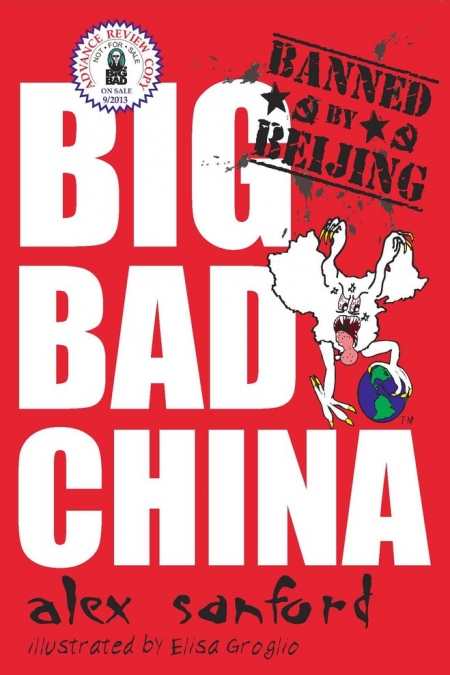
Big Bad China
Illustrations and A-Z chapters aim to get young adults interested in the harsh realities of China.
With cartoonish drawings and speculation about a closed society, Big Bad China is a great resource—albeit an overly emotional one—for young adults interested in learning about the Chinese government.
This encyclopedic guide mixes fact, speculation, and an unconventional graphic format to build its case that the People’s Republic of China is both big and bad. The world’s largest population, largest oil importer, and worst polluter, “despite millennia of achievement and a generally well meaning population,” is still a highly repressive, one-party state. Alex Sanford, a lawyer who has worked in Beijing, and Elisa Groglio, a freelance illustrator, have constructed a colorful collection of fascinating and alarming information about China.
Sanford draws parallels between the cruelty of bygone emperors and the strategies of the Chinese Communist party, giving examples of slaughters from the past, the Maoist policy of “death quotas,” and the “death vans” that prowl modern streets picking up dissidents marked for execution. He compares ancient practices like creating and enslaving eunuchs and binding women’s feet to modern strategies of depriving citizens of basic freedoms.
The book’s chapters go from A (for AIDS and the governmental policy of selling tainted blood on the international market) to Z (for the wholesale genocide of about a million Zunghar Buddhists in the eighteenth century). The author deftly interweaves speculation and factual data to underscore his conviction that China is extremely dangerous to citizens and casual visitors alike: “You might send an email to a friend, criticizing some aspect of Chinese government or society, or sharing a joke at the Party’s expense. Will you be seized by the authorities, charged, and sentenced to … death?! Maybe.” Or, “Keep your child well in tow if you ever visit China. A moment’s inattention could mean a quick profit for a kidnapper and the infliction of a crippling wound and ruined future on your child.”
Big Bad China is organized like a textbook, presumably targeting a young adult audience. Its 105 short chapters are alphabetically arranged, each beginning with a full-page cartoon—a hooded figure cutting down innocent people with a bloody scythe, a uniformed man shooting a kneeling victim, Mao as the crucified deity. Unfortunately, these cartoons, mimicking Asian graphic styles like anime, call to mind the racially tinged caricatures of the Japanese widely circulated during World War II.
At the end of each chapter are useful, color-coded text boxes: bibliographic references, websites, lists of rights organizations, names of activists in the struggle against policies cited in the chapter, and cross-references to related chapters. Though he has amassed a mountain of factual material and organized it stylishly, Sanford too often resorts to emotionally charged images as cited above. This tactic, coupled with some of more the bizarre illustrations, will weaken his case among more seasoned and informed readers.
Though Big Bad China is an original treatment of a highly topical subject with plenty of facts to bolster its thesis, its overall tone is far too emotional, making it unlikely to be given the serious attention it might otherwise have merited.
Reviewed by
Barbara Bamberger Scott
Disclosure: This article is not an endorsement, but a review. The publisher of this book provided free copies of the book and paid a small fee to have their book reviewed by a professional reviewer. Foreword Reviews and Clarion Reviews make no guarantee that the publisher will receive a positive review. Foreword Magazine, Inc. is disclosing this in accordance with the Federal Trade Commission’s 16 CFR, Part 255.
